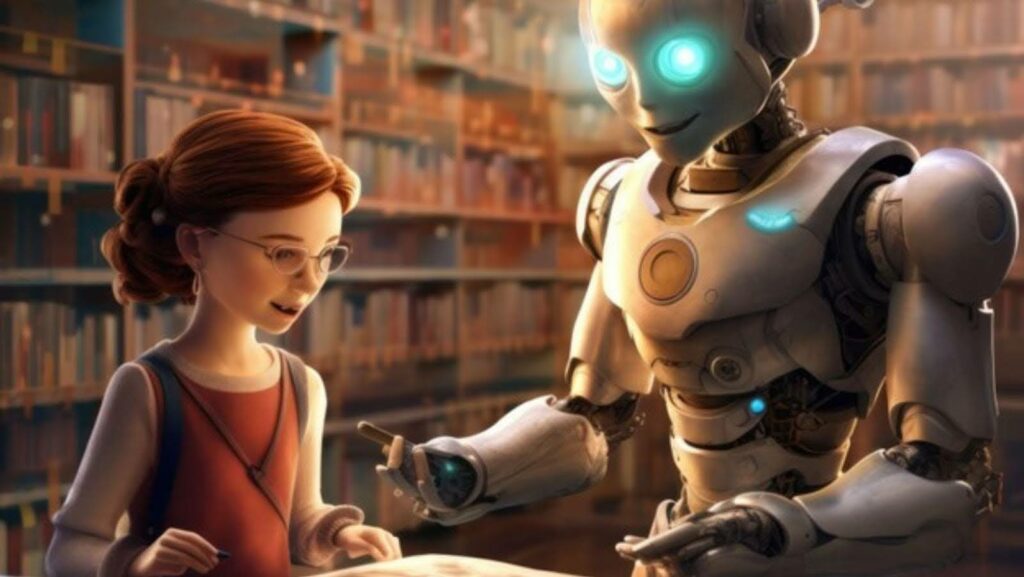
We’re standing on the brink of a technological revolution that’s reshaping our world and the way we learn. Artificial Intelligence (AI) isn’t just a buzzword anymore; it’s a powerful force transforming the educational sector.
The Role of AI in Personalized Learning
AI’s impact extends to personalized learning, a strategy that optimizes education for each student’s strengths, weaknesses, and preferences. Let’s delve deeper into the topic via these subheadings:
Adaptive Learning Technologies
AI’s role in adaptive learning technologies proves irreplaceable. It facilitates personalized learning processes by adjusting the difficulty of educational tasks, pacing, and content presentation. For instance, DreamBox, a math tutoring software, customizes content according to a student’s skill level. Similarly, tools like Knewton and Cerego provide personalized learning experiences by tracking student progress and prompting revision for weaker areas.
Customized Educational Paths
AI’s ability to create customized educational paths further exemplifies its role in personalized learning. It tailors curriculum according to individual learning goals, experiences, and progress. AI systems like Content Technologies, Inc.’s Deep Learning Platform can generate customizable digital textbooks. Furthermore, platforms such as Realizeit offer AI-driven personalized learning paths, reinforcing the right knowledge at the right time. Through such platforms, AI continues to transform personalized education.
Enhancing Educational Access and Inclusivity
Artificial Intelligence (AI) is vanquishing barriers in the educational realm, shaping a learning environment that caters to all. It is fostering inclusivity, ensuring equal access to quality education for everyone.
AI Tools for Special Needs Education
Educators are increasingly using tools like an AI presentation maker to develop interactive and visually appealing learning materials. AI enchants the sphere of special needs education, providing tailored experiences to distinct learners. Technological tools like Microsoft’s Immersive Reader and Google’s Live Transcribe offer enhanced reading and hearing assistance, benefitting those with dyslexia and hearing impairments. Additionally, there’s Proloquo2Go, an AI-powered tool that produces augmentative and alternative communication, significantly aiding non-verbal or communication-impaired students.
Breaking Geographic Barriers
AI isn’t confining its educational innovation to physical classrooms. Embrace of technology has broken geographic barriers, giving rise to interactive digital classrooms. Platforms like CENTURY Tech and Coursera show how AI not only brings learning to remote areas, but also enhance student engagement. Such platforms personalize the learning path even in an online set-up, thereby refining education beyond geographical limitations.
Improving Teacher Efficiency and Classroom Management
Harnessing the power of AI in the classroom spawns a fresh, dynamic interaction between teachers and students. Not only does AI elevate the learning process, but it also amplifies the operational efficiency and classroom control aspects for teachers.
Automated Administrative Tasks
Administrative tasks – grading assignments, maintaining records, planning lessons – are integral to a teacher’s role, but they are often time-consuming. AI steps in here, automating many such tasks therefore liberating more time for educators to focus on actual teaching. For example, intelligent tutoring systems and certain learning management systems can automatically assess and grade students’ work. Even lesson planning gets a boost as AI can analyze specific class’s learning patterns and recommend tailor-made lesson plans, thus bolstering academic productivity.
Behavioral Analysis and Classroom Dynamics
Studying classroom behavior can be a Herculean task. Today, AI technologies can observe and analyze student behavior, attendance, and participation patterns, leading to improved classroom interaction. Applications such as ClassDojo facilitate real-time behavior tracking, improving classroom dynamics by applying suitable intervention measures promptly. This isn’t limited to disruptive behavior alone. Spotting shy students who may need additional encouragement to participate or identifying patterns that lead to successful group dynamics falls well within AI’s capabilities, contributing greatly towards a cohesive, dynamic learning environment.
Ethical Considerations and Challenges
Despite the numerous benefits AI brings to the educational sector, it isn’t without associated ethical considerations and challenges.
Privacy and Data Security Issues
Personal data protection remains an important issue when it comes to the use of AI in classrooms. As students interact with AI-powered tools and platforms, they generate sensitive data. This data, if mishandled, can lead to privacy breaches. For instance, ClassDojo and Knewton, while helpful in their own right, collect vast amounts of student information. Therefore, to uphold user privacy, adequate measures for securing this data must be in place.
Addressing Biases in AI Algorithms
A challenge that comes with AI applications is algorithmic bias. The reason is, AI technology, which bases its functionality on prior data, might inherit existing biases. Consider IBM’s Watson, a system trained on textbooks predominantly authored by Western scholars. It might develop a bias towards Western perspectives, inadvertently promoting them over others. Consequently, we must ensure that AI tools in education are as unbiased as possible, celebrating diversity and fostering inclusivity.
Conclusion
So, we’ve seen the transformative power of AI in education. From personalized learning experiences and enhanced accessibility to data-driven insights and automation of administrative tasks, AI is revolutionizing how education is delivered and received. It’s not just about personalized learning tools like DreamBox and Knewton or inclusivity platforms like Microsoft’s Immersive Reader. It’s also about breaking the traditional boundaries of education with platforms like CENTURY Tech and Coursera.
Let’s not forget the ultimate goal here: to make education a more diverse and inclusive space. As we move forward, it’s crucial that we ensure AI tools in education are unbiased. After all, technology should be a tool to enhance learning, not a hurdle to overcome. Let’s harness the power of AI to create an educational landscape that is truly inclusive and beneficial for all.









